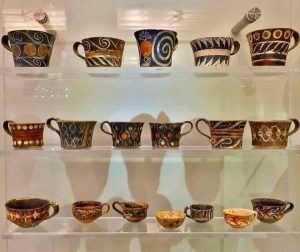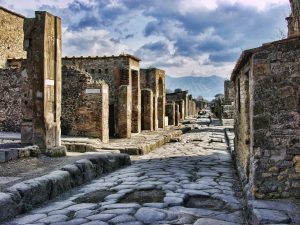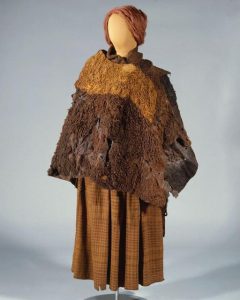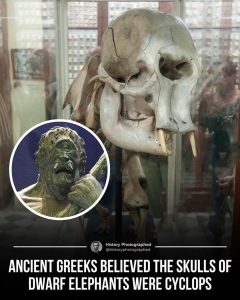Discovered in the ancient settlement of Akrotiri on the island of Santorini, Greece, the Minoan Lady Fresco is a captivating example of Aegean art from the 17th century BC. Located in Room 1 of the House of the Ladies, this fresco showcases the sophisticated artistry and cultural richness of the Minoan civilization that once flourished on the Aegean islands.
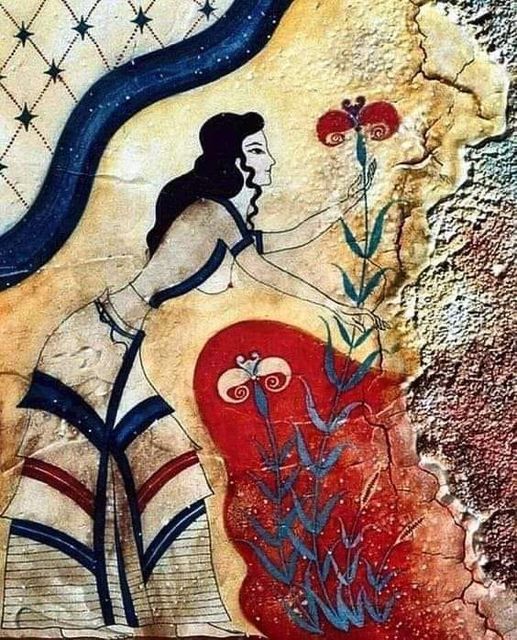
The fresco, depicted in the image, highlights a young woman in a moment of gentle interaction with nature, possibly picking flowers. Her posture and the fluidity of her movements are rendered with a grace that belies the age of the artwork. The woman is dressed in typical Minoan attire, characterized by its vivid colors and intricate detail, which remains remarkably preserved. The attire includes a fitted bodice and a flared skirt, which highlight the fashion sensibilities of the time—sensibilities that, as noted, could seamlessly blend into even modern wardrobes due to their elegance and aesthetic appeal.
Above the woman, the fresco features a representation of a starry sky, suggesting a connection between the Minoans and their environment, both terrestrial and celestial. This element not only adds a spiritual dimension to the scene but also enhances the overall composition with a sense of harmony and cosmic order.
The Minoan Lady Fresco stands as a testament to the advanced artistic skills of its creators. The use of color, proportion, and form demonstrates a sophisticated understanding of human anatomy and aesthetic balance, making the fresco not just a cultural artifact but also a piece of timeless beauty. The pigments used have retained their vibrancy over millennia, suggesting that the Minoans had mastered the art of creating durable and striking color palettes.
The preservation of this fresco allows historians and archaeologists to delve deeper into the social and cultural aspects of Minoan life. The depiction of women in a prominent and respectful manner suggests their significant role within Minoan society. The careful attention to detail in their garments and the overall composition of the fresco indicates a society that valued beauty and grace.
Visitors to the site of Akrotiri are often struck by the beauty and expressiveness of the Minoan frescoes. These artworks provide a window into a world that, while separated from us by thousands of years, still resonates with contemporary audiences through its themes of nature, beauty, and human experience.
In essence, the Minoan Lady Fresco is not just an archaeological treasure but a piece of art that bridges the past and present, inviting onlookers to appreciate the continuity of human expression through art. It serves as a vivid reminder of the sophisticated and dynamic culture that once thrived in the ancient Aegean and continues to inspire admiration and wonder to this day.

